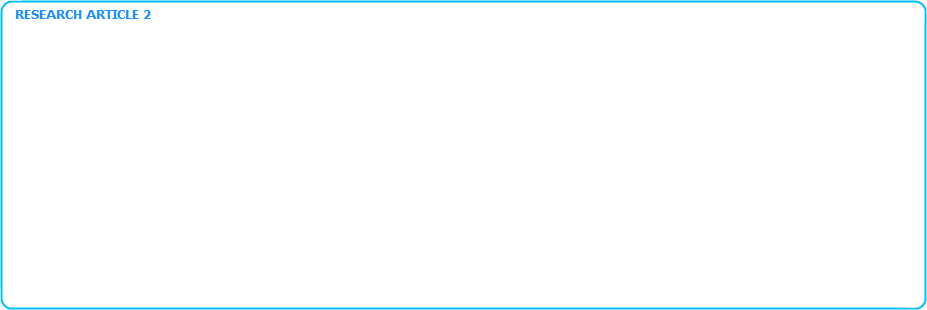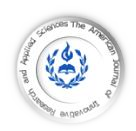
GENERAL INFORMATION


| Info-AJIRAS-® Journal ISSN 2429-5396 (Online) / Reference CIF/15/0289M |
American Journal of Innovative Research & Applied Sciences
*Corresponding author Author & Copyright Author © 2020: | Dimah Mohsen Mohamad |. All Rights Reserved. All articles published in American Journal of Innovative Research and Applied Sciences are the property of
Atlantic Center Research Sciences, and is protected by copyright laws CC-BY. See: http://creativecommons.org/licenses/by-nc/4.0/
MARCH | VOLUME 10 | N° 3 | 2020 |
| ARTICLES | Am. J. innov. res. appl. sci. Volume 10, Issue 3, Pages 105-111 (March 2020)

MANAGEMENT SCENARIOS FOR SEAWATER INTRUSION INTO UNCONFINED AQUIFER BETWEEN THE SIN AND ROUS RIVER-SYRIA
| Dimah Mohsen Mohamad 1* | Sharif Badr Hayek 2 | and | Ali Mohamad Alasaad 3 |. Am. J. innov. res. appl. sci. 2020; 10(3):106-111.
| PDF FULL TEXT | | Abstract and Author Contact | | XML FILE |
| Dimah Mohsen Mohamad 1* | Sharif Badr Hayek 2 | and | Ali Mohamad Alasaad 3 |. Am. J. innov. res. appl. sci. 2020; 10(3):106-111.
| PDF FULL TEXT | | Abstract and Author Contact | | XML FILE |

ABSTRACT
Background: The demand for fresh water in coastal areas increases due to the increase in economic activity, which requires an increase in the pumping of fresh groundwater to meet these needs. This causes low levels of groundwater and an imbalance in the hydrodynamic balance between fresh groundwater and sea water. Objectives: The research aims to build a numerical model for sea water intrusion in the research area using SEAWAT code in GMS program, and Develop a plan to invest available groundwater without depletion or salinization. Methods: The research was based on a monitoring network distributed in the study area consisting of 36 wells, where measurements (static depth of water level and electrical conductivity) continued during the period (October 2016 to September 2017). Chemical analyzes of some wells were also performed. We used the MODFLOW model to build a numerical model of groundwater movement, and SEAWAT model for studying the movement of salts in the research area. Results: This research finds that The salinity values increase from 400 mg/l to 8000 mg/l in the east and west, respectively, in calibration period. The application of two scenarios in the research area resulted in clarifying the effect of pumping from the proposed wells. Conclusions: The study reveals that the scenario of water resources investment without seawater intrusion was the scenario of drilling wells close to towns and at the same time distant on the seashore at a distance of no less than 700 meters.
Keywords: Salinity, SEAWAT, Model.
Background: The demand for fresh water in coastal areas increases due to the increase in economic activity, which requires an increase in the pumping of fresh groundwater to meet these needs. This causes low levels of groundwater and an imbalance in the hydrodynamic balance between fresh groundwater and sea water. Objectives: The research aims to build a numerical model for sea water intrusion in the research area using SEAWAT code in GMS program, and Develop a plan to invest available groundwater without depletion or salinization. Methods: The research was based on a monitoring network distributed in the study area consisting of 36 wells, where measurements (static depth of water level and electrical conductivity) continued during the period (October 2016 to September 2017). Chemical analyzes of some wells were also performed. We used the MODFLOW model to build a numerical model of groundwater movement, and SEAWAT model for studying the movement of salts in the research area. Results: This research finds that The salinity values increase from 400 mg/l to 8000 mg/l in the east and west, respectively, in calibration period. The application of two scenarios in the research area resulted in clarifying the effect of pumping from the proposed wells. Conclusions: The study reveals that the scenario of water resources investment without seawater intrusion was the scenario of drilling wells close to towns and at the same time distant on the seashore at a distance of no less than 700 meters.
Keywords: Salinity, SEAWAT, Model.

Authors Contact
*Correspondant author and authors Copyright © 2020:
| Dimah Mohsen Mohamad 1* | Sharif Badr Hayek 2 | and | Ali Mohamad Alasaad 3 |
Affiliation.
1. Tishreen University | department of Water Engineering and Irrigation | Lattakia | Syria |
2. Tishreen University | department of Water Engineering and Irrigation | Lattakia | Syria |
3. Tishreen University | department of Water Engineering and Irrigation | Lattakia | Syria |
This article is made freely available as part of this journal's Open Access: ID | Dimah-Ref.1-ajira260220 |
| HOME | ABOUT US | ARCHIVE | AIMS AND SCOP | AUTHORS | REVIEW | SUMIBMIT MANUSCRIPT | EDITORIAL BOARED | PUBLICATION FEE |

| ISSN: 2429-5396 (e) | https://www.american-jiras.com | |
| Web Site Form: v 0.1.05 | JF 22 Cours, Wellington le Clairval, Lillebonne | France |
| Web Site Form: v 0.1.05 | JF 22 Cours, Wellington le Clairval, Lillebonne | France |

American Journal of innovative
Research & Applied Sciences
Research & Applied Sciences
|

ISSN 2429-5396 (Online)
OCLC Number: 920041286
OCLC Number: 920041286
| HOME || ABOUT US || ARCHIVES || AIMS AND SCOP || AUTHORS || REVIEW|| SUBMIT MANUSCRIPT || EDITORIAL BOARD || CONTACT US |